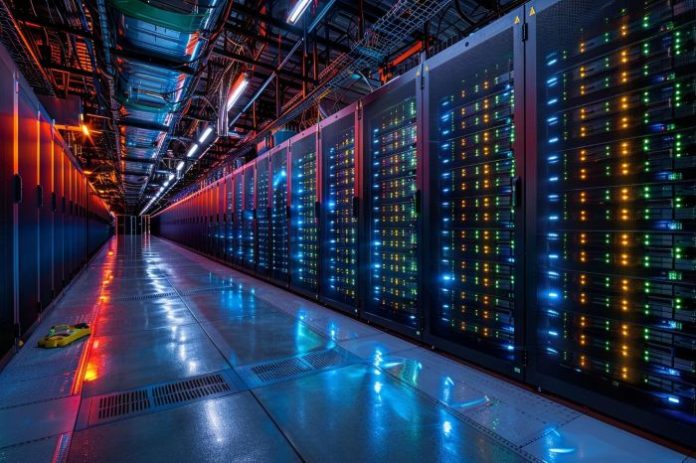Data centers used to be rigid and siloed stacks. But there’s been a paradigm shift transforming them into software-defined platforms mirroring cloud speed and simplicity. Hyperconverged infrastructure, which unifies storage, compute, and networking through software, has accelerated this shift, reducing complexity and delivering cloud-like operation on premises.
Many businesses nowadays are moving away from the traditional three-tier architecture because it’s slow, hard to scale, and expensive. With hyperconverged infrastructure, faster deployment, scalability, and centralized management become easy.
Next-generation solutions combine distributed storage, SDN, and built-in security, reducing the cost of data access by 72%. HCI promises faster provisioning, linear scale‑out, and a single control plane for day‑to‑day operations.
If you’re still stuck with traditional systems, there are multiple reasons to reconsider your choices and move to HCI. Go through this clear comparison for further clarification.
Key Takeaways
- Hyperconverged infrastructure (HCI) transforms traditional data centers by integrating compute, storage, and networking into a cohesive platform.
- HCI simplifies management, speeds up deployment, and offers easy scalability compared to traditional IT systems.
- Sangfor’s HCI solutions stand out with features like fast deployment, enhanced security, and hybrid cloud flexibility.
- Transitioning to HCI can reduce the total cost of ownership by up to 70%, addressing the inefficiencies of older systems.
- Modern businesses should consider adopting HCI for improved agility, efficiency, and operational simplicity.
Table of contents
Understanding Traditional IT Systems
Traditional IT systems rely on physical hardware and software managed on-premises and within a company’s data center. These systems are complex from the architectural, ownership, and management points of view. Here’s why:
Firstly, the architecture of traditional systems relies on multiple hardware components and software. They typically have a data center that separates computers (servers/hypervisors), storage (SAN/NAS), and networking (LAN/FC). This approach puts computing, storage, and networking into different silos where each of them requires separate hardware, skill sets, and maintenance.
Secondly, when the consoles, software, and architecture are fragmented, the interdependencies become complex, and maintenance is overpriced. Whether you require sizing, upgrading, firmware, or troubleshooting, you’re subscribing to expensive procedures.
Thirdly, hierarchical three‑tier networks add hops and contention, increasing latency for east‑west traffic; scaling often requires forklift upgrades to storage arrays or controller tiers, which drives TCO.
What Is Hyperconverged Infrastructure (HCI)?
Hyperconverged infrastructure, or HCI, is an advanced form of IT systems that integrates compute, storage, and networking. The management of all three aspects happens through a single interface, allowing teams to allocate resources centrally and scale by adding nodes.
Leading HCI provider Sangfor maximizes HCI efficiencies by tailoring its approach through the following solutions:
Converged Infrastructure: This infrastructure combines networking, storage, and computation in a single and unified software stack. This combined approach eliminates the need for separate hardware infrastructure and the cost associated with it.
Simplified Management: Manage all of your resources from a single platform using their platform-specific features, such as “what you draw is what you get.” This is a topology editor that helps simplify network creation.
Scalability: Allows businesses to scale out their data center resources by simply adding more commodity servers as their needs grow.
Security: It integrates advanced-level security features such as anti-ransomware protection, virtual firewalls, micro-segmentation, and next generation firewall capabilities to decrease the attack surface.
Performance: Designed for high performance with features such as intelligent VM scheduling and high availability with integrated backups and data redundancy.
Hyperconverged Infrastructure vs Traditional IT Systems: Key Differences
Here’s how hyperconverged infrastructure solutions differ from traditional systems:
Difference by Architecture
Hyperconverged infrastructures are fully converged. They converge compute, storage, and networking into a single software-defined stack.
Traditional IT systems, on the other hand, are composed of discrete components. They have separate servers, SAN/NAS storage, and networking devices.
Deployment Time Difference
The deployment strategy for HCI is simple. In fact, a full deployment takes around 2 weeks to complete. Additionally, employee training to be fully operations-ready spans around 2 days.
On the other hand, traditional IT systems take a longer time to deploy. Deployment engineers must configure multiple systems and manage complex vendor coordination to smoothly deploy the system and make it ready to use.
Difference in Scalability
HCI is scalable. In fact, horizontal scaling is very simple for a hyperconverged infrastructure. All you have to do is add nodes, and it’ll result in near-linear performance growth.
But scaling a traditional IT system isn’t as easy. It requires forklift upgrades. It becomes complex and time-consuming in the process.
Compute Performance
With HCI, management overhead is significantly reduced thanks to its management being simplified through an integrated compute, storage, and network at the core. Additionally, HCI enables linear scaling.
Traditional systems, which use separate hardware for each component, can be slower. With multiple components to manage, the system becomes slower as multiple components start creating bottlenecks for the operating team.
Difference in Network Throughput
High-speed data transfer is easier in the hyperconverged infrastructure. Integrated virtual networking supports 10GbE NICs for a high-speed data transfer, thus making data transfer easy and more convenient.
On the other hand, traditional systems rely on physical switches and routers. Here, scaling bandwidth requires the use of more hardware.
Difference in Management Complexity
There’s a single-pane management system interface in HCI, simplifying monitoring and management. Since compute, storage, and networks are converged into a single uniform interface, the management part becomes automated with HCI.
But when it comes to traditional IT systems, there are multiple management tools for compute, storage, and networking.
Difference in TCO
According to Sangfor, HCI reduces the total cost of ownership by 70% due to consolidation and simplified O&M. On the other hand, organizations continuing to use traditional IT systems have to deal with a higher TCO from diversity, licensing, and operational overhead.
Sangfor’s HCI Solution Highlights
What sets Sangfor apart from most VMware alternatives today is high availability 2.0, Integrated Disaster Recovery, and seamless scalability. Additionally, Sangfor ensures that its customers get a full setup within less than two weeks, alongside gaining basic troubleshooting proficiency in two days. This approach makes Sangfor the easily dependable option for a hyperconverged infrastructure.
Deployment Speed
Customers report full setup in two weeks and basic troubleshooting proficiency in two days of training. This ultimately accelerates your production in less time.
Hybrid Cloud Flexibility
Unified hybrid cloud: extend onprem HCI to Managed Cloud Services (MCS) on the same stack for workload portability, centralized control, and consistent security.
Security & Reliability
Security is embedded: distributed firewalling, smart micro‑segmentation, next-generation firewall, and ransomware recovery playbooks, added with hardened backup integrations to minimize blast radius and speed recovery.
Take Steps Ahead of Traditional IT Systems Today!
Most enterprises are now modernizing their on-premises environments. Hyperconverged infrastructure is a must-have for organizations that want to integrate the cloud-like agility without surrendering control or compliance. Sangfor’s HCI packages virtualization, networking, storage, and security into an open platform, allowing ease of operation and scalability to organizations that need them. In short, choosing HCI in today’s time is like moving ten steps ahead of traditional IT systems. Would you consider consolidating your data center, accelerating deployment, and standardizing resilience across sites and clouds? Or would you prefer to stay within the traditional IT system? Share your thoughts with us through the comments.










